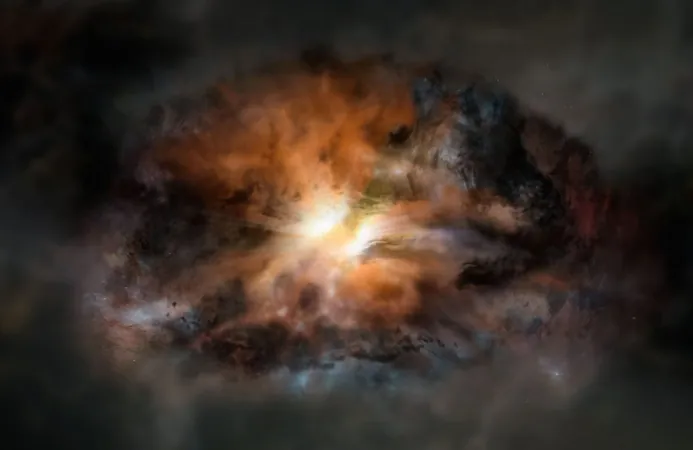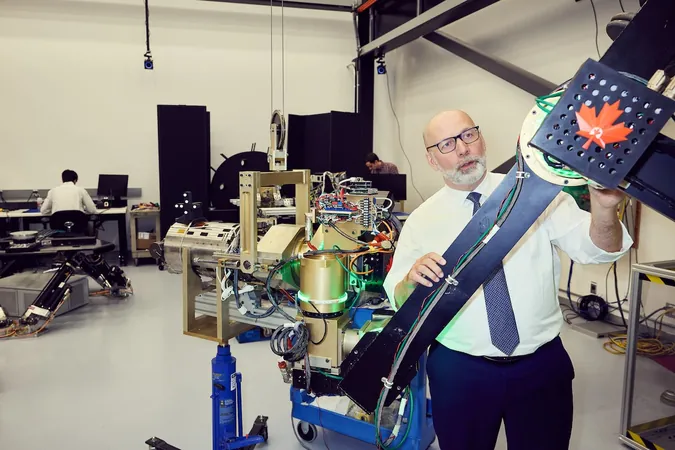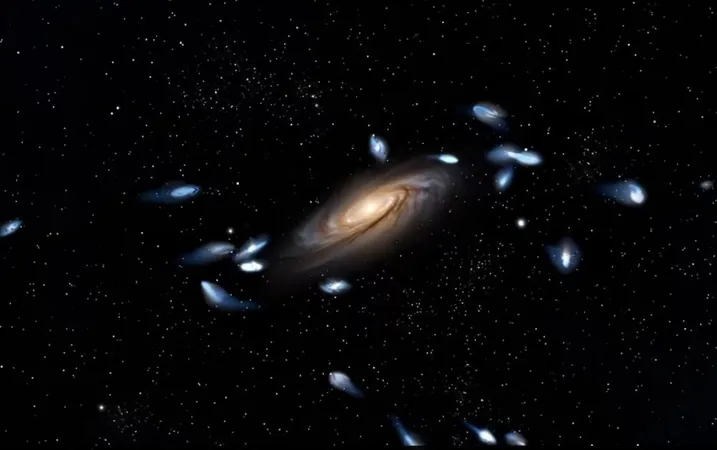
Unveiling the Secrets of the Mysterious Hot DOG Galaxy W2246-0526
2025-07-06
Author: Benjamin
A Cosmic Wonder: Meet W2246-0526
Astronomers love to play with names that can be quirky or downright torturous! From whimsical galaxy nicknames like 'green peas' and 'blueberries' to the utterly complex acronyms of telescopes, the universe is a playground for imagination. One such intriguing creation is the Hot DOG galaxy, scientifically known as W2246-0526—a name that certainly catches attention!
The Discovery of a Hot DOG
Discovered through the data from the infrared space telescope WISE, which operated from 2009 to 2024, W2246-0526 holds the title of the most luminous object in its survey. With a staggering redshift of z=4.6, we're witnessing this galaxy as it existed when the universe was only a fraction of its current age!
Hidden Majesty Beneath the Dust
What makes W2246-0526 truly captivating is the thick veil of dust obscuring what would typically be a brilliant quasar. This dust behaves like a glowing ember, radiating infrared light—a classic feature of Hot DOGs. Its overwhelming brightness is linked to its central black hole, drawing in material at an incredible pace.
A Snapshot of Cosmic Turbulence
The activity of this rapidly accreting black hole sends shockwaves throughout the galaxy, with expelled materials racing at speeds over 10,000 km/second. Such chaotic environments might resemble the early universe, and W2246-0526's brightness offers a unique glimpse into the formation and behavior of galaxies in their infancy.
Exciting Findings from ALMA
Recent studies utilizing data from the Atacama Large Millimeter/submillimeter Array (ALMA) have focused on the gas composition of this extraordinary system. The analysis of carbon monoxide reveals a high-energy state indicative of a robust molecular gas density, totaling around 100 billion solar masses—an astonishing amount considering the galaxy's age.
Gas Galore: A Recipe for Galaxy Growth
What’s even more fascinating is that the proportions of gas in the form of carbon monoxide closely resemble those found in our own Milky Way today, underscoring the rapid growth of this galaxy. These findings illuminate the bizarre yet transient phases that galaxies like W2246-0526 experience as they evolve.
Looking to the Future of Cosmic Exploration
As astronomers continue their quest to explore deeper into the universe, future observations with advanced telescopes will aim to uncover more mysteries surrounding W2246-0526. With the excitement mounting, one can only echo the delightful refrain of the paper's title: hot diggity dog!









 Brasil (PT)
Brasil (PT)
 Canada (EN)
Canada (EN)
 Chile (ES)
Chile (ES)
 Česko (CS)
Česko (CS)
 대한민국 (KO)
대한민국 (KO)
 España (ES)
España (ES)
 France (FR)
France (FR)
 Hong Kong (EN)
Hong Kong (EN)
 Italia (IT)
Italia (IT)
 日本 (JA)
日本 (JA)
 Magyarország (HU)
Magyarország (HU)
 Norge (NO)
Norge (NO)
 Polska (PL)
Polska (PL)
 Schweiz (DE)
Schweiz (DE)
 Singapore (EN)
Singapore (EN)
 Sverige (SV)
Sverige (SV)
 Suomi (FI)
Suomi (FI)
 Türkiye (TR)
Türkiye (TR)
 الإمارات العربية المتحدة (AR)
الإمارات العربية المتحدة (AR)